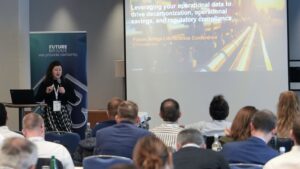Scope 3 emissions originating from a company’s supply chain often comprise the bulk of its carbon footprint. So, supplier engagement is critical for driving down these indirect greenhouse gas emissions. This is through collaboration, incentives, contractual requirements, and capability building.
This comprehensive guide provides proven strategies for getting suppliers to commit to emissions reductions. This is through data sharing, goal setting, training, and implementing sustainability initiatives across procurement and operations. So, read on to learn how companies can leverage purchasing power and partnerships to dramatically cut supply chain emissions.
Why Supplier Engagement is Crucial to Scope 3 Reductions?
Scope 3 emissions are all the greenhouse gases released indirectly because of a company. This includes things like the stuff they buy, how they move things around, business trips, and how people use their products. For lots of companies, these Scope 3 emissions make up most of their total emissions when you add up everything. This means that focusing solely on reducing the internal operational footprint is not enough. This is to meaningfully tackle overall carbon impacts. So, suppliers at every tier must be fully engaged in emissions measurement, reporting, and reduction efforts. This is to achieve real progress on total carbon footprints.
Furthermore, suppliers have direct control and influence over their operations and practices. By setting joint emissions goals, providing training and resources, and integrating sustainability requirements into procurement processes, companies can mobilize suppliers. This is across their value chains to systematically track, report on, and reduce emissions.
Moreover, this level of collaboration and capability building is essential for companies. This is to meet their Scope 3 goals and accelerate progress toward science-based decarbonization targets. Additionally, proactively partnering with suppliers turns a huge challenge into a tremendous opportunity.
Challenges Companies Face in Supplier Engagement
Engaging the supply chain poses many challenges as well. Let us look at those challenges in this section:
- Suppliers, especially small companies, may lack awareness of sustainability issues and not view climate action as a priority. Moreover, they are often focused on day-to-day business objectives.
- Many suppliers lack expertise in sustainability management. They also do not have the resources to measure, report on, and reduce emissions from their operations.
- Suppliers may be unwilling to share potentially sensitive emissions data. It may be due to competitiveness concerns.
- Complex, multi-tier supply chains make comprehensive data collection and traceability difficult. Additionally, companies lack visibility beyond Tier 1 suppliers.
- Suppliers perceive requests for sustainability practices as an added burden that will increase costs. Moreover, they may resist change.
To overcome these barriers, companies must make a compelling business case for climate action. Furthermore, they should provide incentives as well as requirements and invest time in building supplier capabilities. Additionally, developing trusted partnerships for sharing information and accelerating progress can help in supplier engagement as well.
Key Strategies for Effectively Engaging Suppliers on Emissions Reductions
Here are proven strategies and best practices that leading companies use for engaging suppliers to achieve Scope 3 emission reduction goals:
Set Clear Expectations and Requirements
Communicating expectations and requirements is essential. So, suppliers must understand the company’s sustainability goals, emissions targets, reporting needs, and specific actions required. Standards and requirements should be incorporated. This is into supplier codes of conduct, procurement contracts, and service agreements.
For example, requiring suppliers to measure and report emissions regularly, setting science-based carbon reduction targets aligned with overall corporate goals, or demanding specific sustainable practices in their operations. So, setting strict expectations and requirements helps drive real change.
Provide Motivators and Incentives
Getting suppliers to go above and beyond the minimum requirements to drive innovation requires incentives, motivators, and rewards. Moreover, offering recognition, awards programs, continued future business, increased orders, and bonuses to top-performing suppliers inspires competition and progressive efforts.
Furthermore, widely publicizing sustainability leaders brings reputational benefits. So, creating friendly competitions around goal achievement taps into intrinsic motivation. Additionally, celebrating collective success publicly reinforces priorities. It also spurs momentum across the supply chain.
Help Suppliers Get Better at Sustainability
Just telling suppliers to be more sustainable isn’t always enough. Companies should spend time and money to help them learn how to manage sustainability better. This includes teaching them how to measure greenhouse gases and report emissions.
Companies can also share knowledge about saving energy, using renewable energy, improving how things are delivered, changing packaging, and other ways to reduce carbon. By doing this, suppliers can take more effective actions to reduce their environmental impact. Giving them funds for trial projects and easy-to-use guides helps them put what they’ve learned into practice. Investing in suppliers’ ability to be sustainable now will make it easier for them to keep improving in the future.
Work Together to Set Goals
Successful companies team up with important suppliers to create goals for reducing carbon emissions. These goals, timelines, and plans are made to fit each supplier’s needs and challenges. Keeping communication open and helping out with technical support builds trust and makes both parties responsible for reaching the goals. Regular check-ins help track progress and make adjustments if needed in the process to engage suppliers on scope 3 reductions.
By working together to develop new products, processes, or technologies, companies, and suppliers can cut emissions faster and strengthen their relationships.
Use Buying Power Wisely
Companies serious about cutting emissions in all areas include sustainability requirements in their buying processes. This means considering how eco-friendly suppliers are when making decisions and setting goals. It also involves asking for reports on carbon emissions when making deals. Companies can choose to buy things that are better for the environment and reward suppliers who keep improving.
Having detailed talks with suppliers about how they’re doing with sustainability shows it’s important. Making smart buying choices can make a big difference in reducing emissions throughout the supply chain.
Gather Supplier Emissions Data
Comprehensively accounting for Scope 3 emissions requires collecting primary emissions data directly from suppliers themselves. So, providing user-friendly but standardized data collection templates customized to suppliers’ operations streamlines the process. Moreover, offering training on major greenhouse gas accounting frameworks like the GHG Protocol ensures high-quality data.
Conducting regular data request campaigns. It should be combined with one-on-one outreach and support. As a result, it produces continuous engagement. Confidentially aggregating data across suppliers reveals reduction opportunity hot spots. So, maintaining supplier data and gathering momentum is key to mapping the carbon footprint.
Forge Supportive Partnerships
Companies can amplify resources for supplier engagement by exploring partnerships. This is with nonprofits, industry associations, local governments, or cross-industry coalitions. Furthermore, these collaborative platforms enable shared training programs, the creation of toolkits, joint purchasing of renewable energy or cleaner transportation, funding for low-carbon R&D, and tackling localized challenges.
Cost and resource sharing through pre-competitive partnerships increase the feasibility of large-scale initiatives. These are the ones that individual companies need help to undertake. Furthermore, partnering also demonstrates sector-wide prioritization of climate action to suppliers.
Provide Hands-On Implementation Support
Do not just tell suppliers what goals and actions are expected. Instead, help them tackle the how of achieving reductions through hands-on support. Furthermore, provide energy audits to identify savings opportunities. Additionally, one should connect suppliers with financing options to fund green investments.
It is wise to offer technical assistance to improve production processes and technologies while planning to engage suppliers on scope 3 reductions. Moreover, try to facilitate peer learning communities for sharing best practices. Additionally, provide grants or revolving loans to fund pilot projects. Also, help troubleshoot challenges that arise. As a result, this level of active support smooths suppliers’ transition to lower-carbon business practices.
Effective Supplier Engagement Programs in Action
Here are some real-world examples of supplier engagement programs companies have implemented that deliver results:
Unilever’s Partner to Win Program:
Unilever works closely with important suppliers to reduce pollution. They do this by training, setting goals to reduce carbon, and investing in new technology together. Suppliers work with Unilever’s experts to find ways to use less carbon in making things, packaging, and delivering. This teamwork helps to cut pollution and makes the companies more competitive.
IKEA’s IWAY Supplier Code of Conduct:
IKEA has a set of rules called the IWAY Supplier Code of Conduct. It is a great way to engage suppliers on scope 3 reductions. It tells all suppliers what they must do to be more sustainable. Suppliers have to measure and reduce carbon emissions, use wood responsibly, avoid harmful chemicals, save water and energy, and treat workers fairly. IKEA checks if suppliers follow these rules regularly, and if they don’t, they might lose their contract.
Nike’s Energy and Carbon Program:
Nike helps its suppliers use less energy and create less pollution. They give tools, training, and support to measure, report, and reduce energy use and carbon emissions. Nike’s experts visit supplier factories to find ways to save energy, like upgrading lights and machines. This not only saves money but also reduces pollution.
Measuring and Communicating Progress on Supplier Engagement
To make supplier engagement better over time, companies need to keep an eye on certain important signs of progress. These signs help them see how well they’re doing in reducing emissions and working with suppliers to be more eco-friendly. Here are some things they should keep track of:
- Percent of Tier 1 suppliers with set emissions reduction targets and science-based targets
- Percent of suppliers reporting Scope 1, 2, and 3 emissions data through CDP or company reporting platforms
- Total greenhouse gas emissions from key suppliers by category
- Percent annual change in emissions for engaged suppliers
- Percent of total procurement spending that meets defined sustainability criteria
- Number of suppliers participating in sustainability training programs
- Supplier adoption rates of renewable energy, energy efficiency, recycling, or other tangible reduction initiatives
- Qualitative assessments of supplier sentiment and collaboration on sustainability over time
It’s not easy to gather all this information from suppliers who are part of long and complicated chains of production. So, companies need to be patient and keep asking for it. They should also celebrate when they hit goals together with their suppliers.
Companies should keep learning and engage suppliers on scope 3 reductions. Moreover, they should keep telling everyone about how they’re doing, to show how important it is to work with suppliers to protect the environment.
Participate in the 2nd Scope 3 Emission Reduction Summit to Accelerate Progress
Companies serious about accelerating supply chain emission reductions should plan to participate in the 2nd Scope 3 Emission Reduction Summit on April 18-19, 2024 in Berlin, Germany.
Attending the summit provides tremendous opportunities to learn from peers, engage with solution providers, forge partnerships, and take supplier collaboration to the next level. Moreover, immersive workshops and interactive sessions enable attendees to exchange ideas and return home equipped with action plans and relationships to drive continued Scope 3 progress. Learn more and register now!




